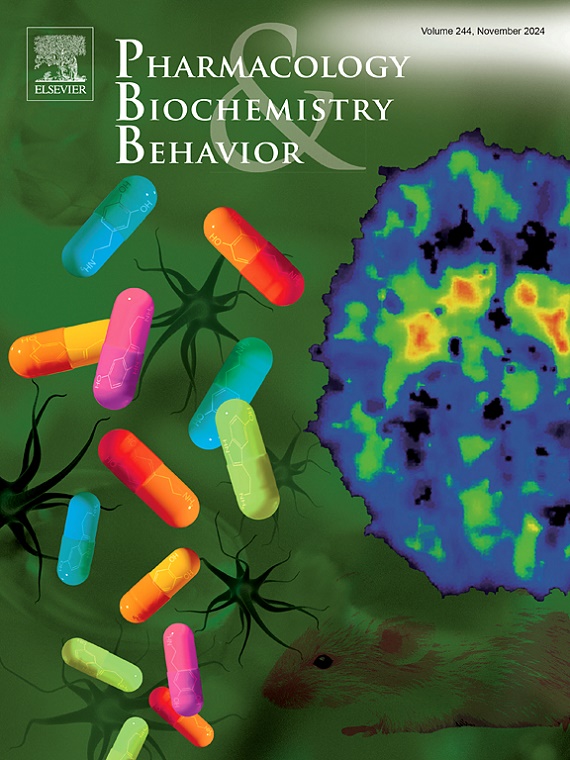限制性神经性厌食症的奖励污染:功能性MRI研究的荟萃分析
IF 3.3
3区 心理学
Q1 BEHAVIORAL SCIENCES
引用次数: 0
摘要
神经性厌食症(AN)的个体是典型的快乐缺乏症,导致奖励处理的内在干扰可能是该疾病的特征标记。先前的研究使用基于任务的功能性磁共振成像(fMRI)来研究AN中与奖励相关的大脑活动,并报道了前额叶皮层、后扣带皮层背侧和前扣带皮层吻侧的激活改变。然而,可能由于所使用的范式和方法的不同,以及样本特征的异质性,结果被证明是不一致的。为了确定AN限制性亚型(AN-r)患者在不同疾病阶段是否表现出与匹配健康对照(hc)不同的奖励诱导激活模式,我们对19项基于任务的fMRI奖励处理研究进行了荟萃分析。使用基于种子的差分映射(SDM)技术,我们发现AN-r和hc之间奖赏相关的大脑活动存在差异。此外,不同的大脑区域在不同的疾病阶段表现出不同的激活,其作用的方向和大小取决于特定的任务刺激。这些发现表明,AN-r患者表现出扭曲的奖励加工,这是奖励污染和对奖励刺激的效价分配改变的结果。在体重恢复的AN-r患者中,hcc的差异持续存在,但仅限于已知AN-r显着萎缩的区域,这表明奖赏加工的改变与厌食性营养不良有关。这些发现对开发药物治疗来帮助AN-r患者的心理恢复具有启示意义。本文章由计算机程序翻译,如有差异,请以英文原文为准。
Reward contamination in restrictive anorexia nervosa: A meta-analysis of functional MRI studies
Individuals with anorexia nervosa (AN) are typically anhedonic, leading to the suggestion that intrinsic disturbances of reward processing may represent a trait marker of the disorder. Previous studies have used task-based functional magnetic resonance imaging (fMRI) to investigate reward-related brain activity in AN and reported altered activation in the prefrontal cortex, dorsal posterior cingulate cortex, and rostral anterior cingulate cortex. However, likely due to the varied paradigms and methodologies used, as well as the heterogeneity in sample characteristics, results have proved inconsistent. To determine whether AN patients with the restrictive subtype (AN-r) show different reward-induced activation patterns to matched healthy controls (HCs) at different illness stages, we conducted a meta-analysis of 19 task-based fMRI studies of reward-processing. Using the seed-based differential mapping (SDM) technique, we found differences in reward-related brain activity between AN-r and HCs. Moreover, different brain regions showed differential activation across illness stages, with the direction and magnitude of effects dependent on specific task stimuli. These findings suggest that those with AN-r show distorted reward processing as a consequence of reward contamination and alterations in valence assignment to reward stimuli. In weight-recovered AN-r patients, differences to HCs persisted but were limited to regions known to exhibit significant atrophy in AN-r, indicating that altered reward processing is associated with anorectic undernutrition. These findings have implications for developing pharmacological treatments to aid psychological recovery in AN-r.
求助全文
通过发布文献求助,成功后即可免费获取论文全文。
去求助
来源期刊
CiteScore
6.40
自引率
2.80%
发文量
122
审稿时长
38 days
期刊介绍:
Pharmacology Biochemistry & Behavior publishes original reports in the areas of pharmacology and biochemistry in which the primary emphasis and theoretical context are behavioral. Contributions may involve clinical, preclinical, or basic research. Purely biochemical or toxicology studies will not be published. Papers describing the behavioral effects of novel drugs in models of psychiatric, neurological and cognitive disorders, and central pain must include a positive control unless the paper is on a disease where such a drug is not available yet. Papers focusing on physiological processes (e.g., peripheral pain mechanisms, body temperature regulation, seizure activity) are not accepted as we would like to retain the focus of Pharmacology Biochemistry & Behavior on behavior and its interaction with the biochemistry and neurochemistry of the central nervous system. Papers describing the effects of plant materials are generally not considered, unless the active ingredients are studied, the extraction method is well described, the doses tested are known, and clear and definite experimental evidence on the mechanism of action of the active ingredients is provided.

 求助内容:
求助内容: 应助结果提醒方式:
应助结果提醒方式:


